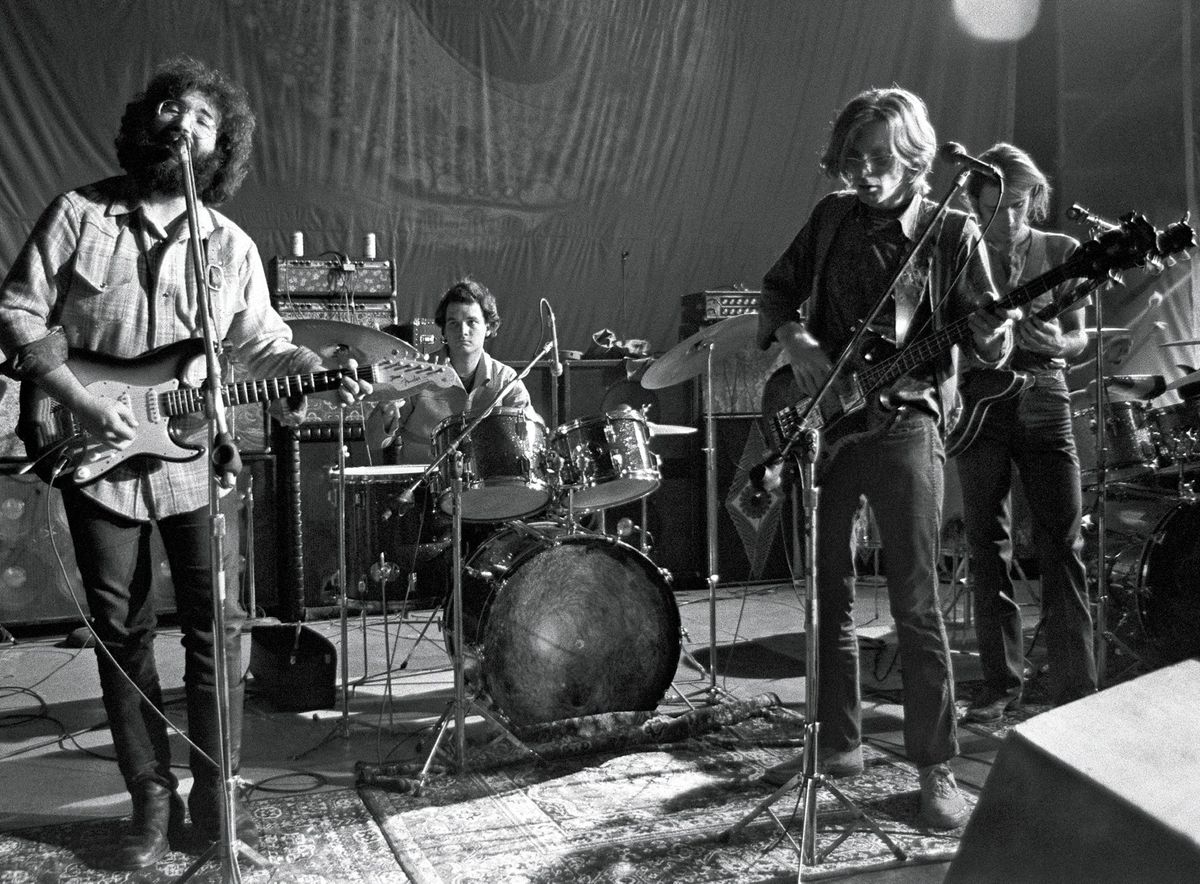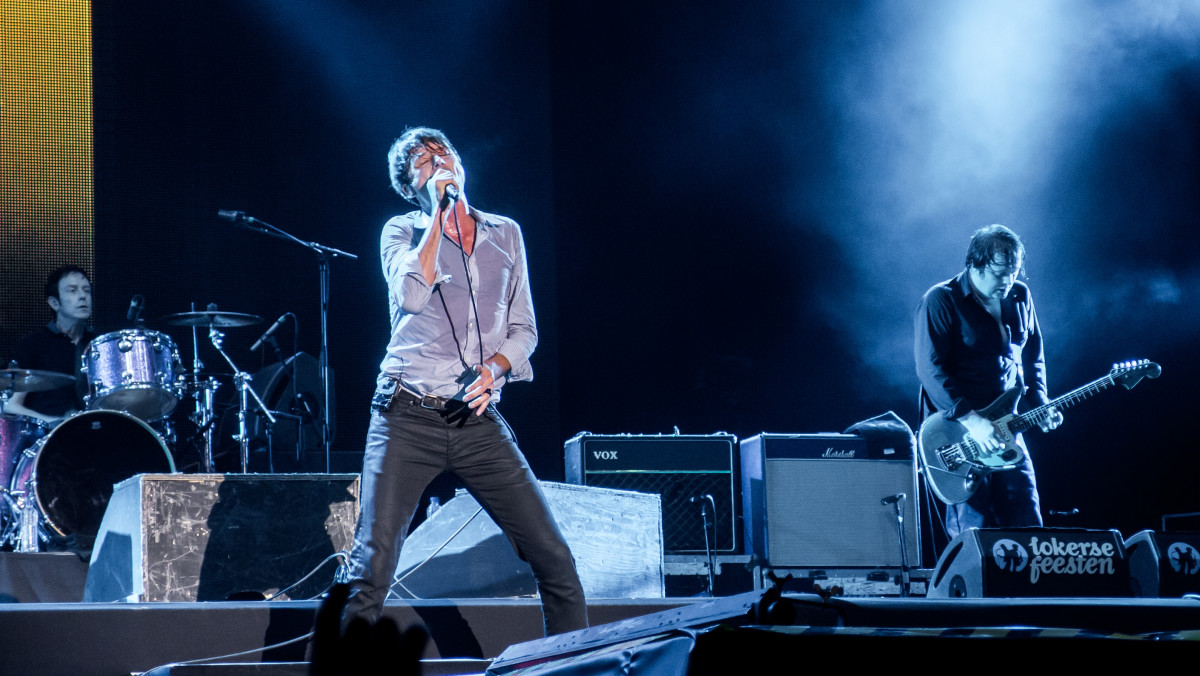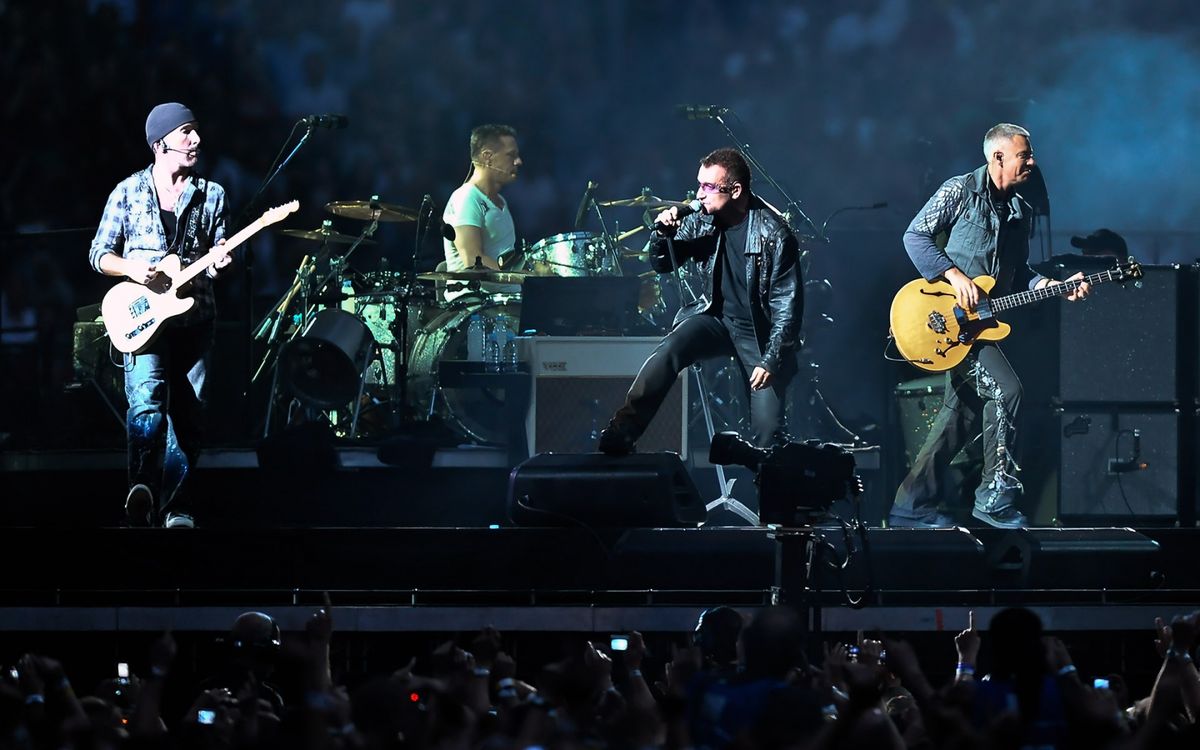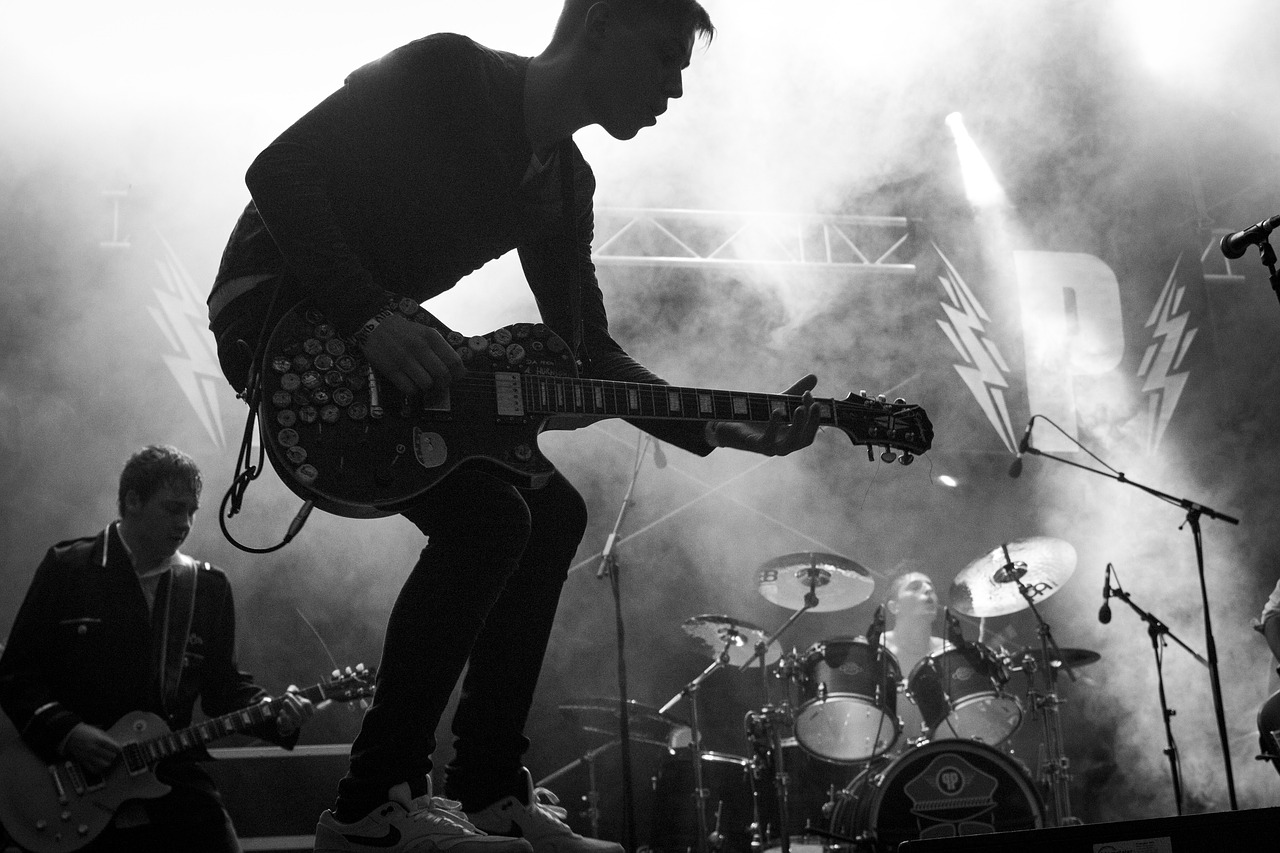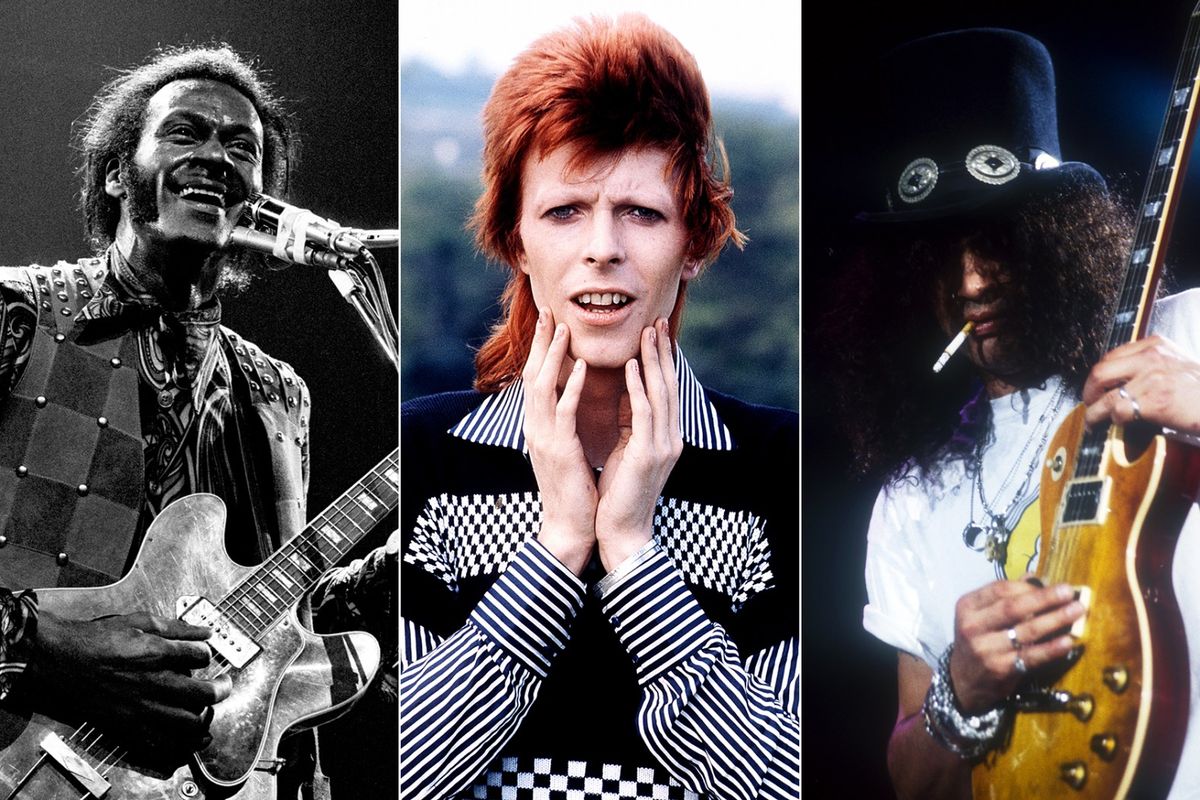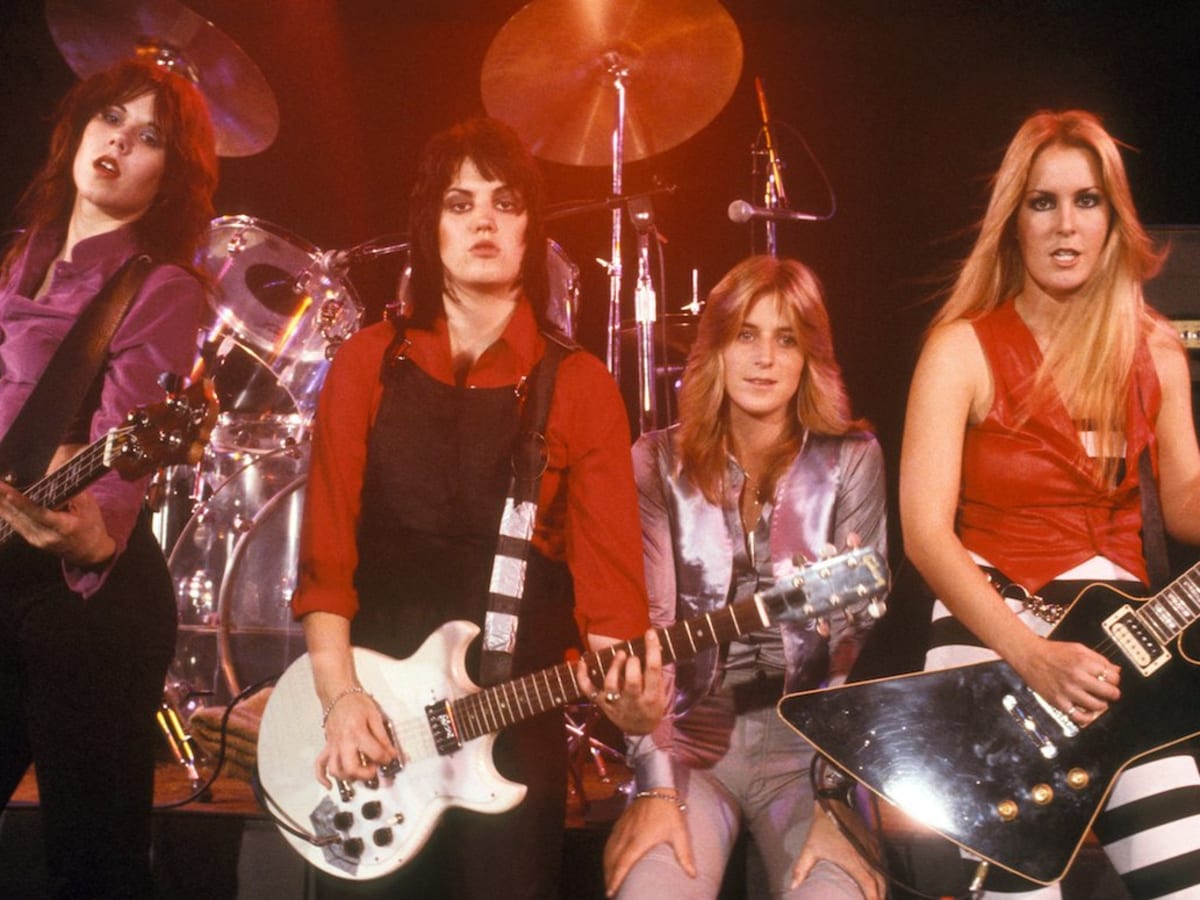

Rock
What Are The Different Kinds Of Rock Music
Modified: January 25, 2024
Discover the various types and subgenres of Rock music, ranging from Classic Rock to Punk and Metal. Explore the history and evolution of this influential genre.
(Many of the links in this article redirect to a specific reviewed product. Your purchase of these products through affiliate links helps to generate commission for AudioLover.com, at no extra cost. Learn more)
Table of Contents
Introduction
Rock music is a genre that has evolved and diversified over the years, giving birth to various subgenres that cater to different tastes and preferences. From the rebellious and energetic sounds of punk rock to the melodic and catchy tunes of pop rock, there is a rock subgenre for everyone. Each subgenre has its own distinctive characteristics, musical styles, and even cultural influences, making rock music a truly versatile and dynamic genre.
Rock music originated in the United States in the 1950s and quickly gained popularity worldwide. It is characterized by its prominent use of electric guitars, bass guitars, drums, and powerful vocals. The genre’s rebellious and energetic spirit has resonated with generations of music enthusiasts, making it one of the most influential and enduring genres in music history.
Throughout the years, rock music has produced a wide range of subgenres, each with its own unique sound and identity. Some of the most prominent subgenres include punk rock, classic rock, hard rock, alternative rock, heavy metal, progressive rock, indie rock, grunge, and pop rock. Each subgenre has its own distinct characteristics and fan bases, contributing to the vast and diverse landscape of rock music.
In this article, we will explore and delve into the different kinds of rock music, highlighting the defining features of each subgenre and showcasing the influential artists and bands that have shaped them. Whether you’re a long-time rock fan or someone new to the genre, this guide will take you on a journey through the rich and vibrant world of rock music.
Punk Rock
Punk rock emerged in the 1970s as a counter-cultural movement characterized by its raw and aggressive sound, political lyrics, and do-it-yourself ethos. It was a reaction to the mainstream music of the time, rejecting the complex and polished sounds of bands like Led Zeppelin and embracing a stripped-down, DIY approach to music-making.
With its fast-paced, short songs and rebellious attitude, punk rock became a voice for disillusioned youth who were fed up with societal norms and political establishments. The genre’s raw energy and abrasive sound were captured by bands like the Sex Pistols, Ramones, and The Clash, who became the pioneers and symbols of the punk movement.
Punk rock is known for its simple three-chord structures, aggressive guitar riffs, and fast, relentless drumming. The lyrics often tackle social and political issues, expressing dissent and frustration. Punk fashion and aesthetics, characterized by ripped clothing, safety pins, and colorful hair, also became an integral part of the movement’s identity.
Over the years, punk rock has evolved into various subgenres, such as pop punk, skate punk, and hardcore punk, each with its own distinct characteristics. Some notable bands from these subgenres include Green Day, Bad Religion, and Black Flag, who have carried the punk spirit into the modern era.
Punk rock’s influence extends far beyond its musical impact. It has left a lasting mark on fashion, art, and even politics. The DIY ethos of the genre inspired countless bands to start their own independent labels and produce their own music, bypassing the mainstream industry. Punk rock’s anti-establishment message also resonated with marginalized communities and fueled social movements.
Today, punk rock continues to be a powerful and influential force in the music world. Its rebellious spirit and raw energy have inspired generations of musicians to question the status quo and push the boundaries of creativity. Punk rock’s impact on music, fashion, and culture is undeniable, making it one of the most iconic and enduring subgenres of rock music.
Classic Rock
Classic rock is a genre that encompasses the rock music of the late 1960s and 1970s. It is characterized by its melodic song structures, guitar-driven sound, and a focus on virtuosic instrumental performances. Classic rock bands drew influence from various genres like blues, folk, and psychedelic rock, creating a timeless and enduring sound.
The era of classic rock produced legendary bands like Led Zeppelin, The Rolling Stones, The Beatles, Pink Floyd, and many more. These bands are known for their iconic guitar riffs, powerful vocals, and memorable hooks. Classic rock songs often featured introspective and poetic lyrics that explored themes of love, social issues, and personal introspection.
One of the defining features of classic rock is its emphasis on album-oriented rock. Instead of just producing hit singles, bands focused on creating cohesive albums that were meant to be listened to in their entirety. Albums like “Sgt. Pepper’s Lonely Hearts Club Band” by The Beatles and “Dark Side of the Moon” by Pink Floyd are prime examples of this concept.
Classic rock is also characterized by its diverse range of musical styles. From the blues-inspired rock of Eric Clapton and Cream to the progressive rock of Yes and Genesis, there was a wide variety of sounds within the genre. Classic rock also saw the rise of stadium rock, with bands like Queen and AC/DC delivering electrifying performances to massive audiences.
The impact of classic rock on popular culture cannot be overstated. Its songs have become anthems, played on radio stations, and featured in movies and commercials. Classic rock bands laid the foundation for future generations of rock musicians and continue to inspire new artists to this day.
While the term “classic rock” is commonly associated with the music of the past, it remains a beloved genre that transcends time and generations. Its timeless melodies, powerful performances, and thought-provoking lyrics continue to resonate with listeners and keep the spirit of rock music alive.
Hard Rock
Hard rock is a subgenre of rock music that emerged in the late 1960s and early 1970s. It is characterized by its heavy, distorted guitar riffs, powerful vocals, and a high level of energy. Hard rock combines elements of blues rock and psychedelic rock, creating a sound that is aggressive, loud, and adrenaline-fueled.
Bands like Led Zeppelin, Deep Purple, and Black Sabbath are considered pioneers of hard rock, pushing the boundaries of rock music with their intense sound and memorable guitar solos. These bands set the stage for the development of heavier genres like heavy metal.
One of the defining features of hard rock is its focus on loudness and intensity. Guitarists often use heavy distortion and power chords to create a wall of sound that is instantly recognizable. Drummers drive the rhythm with pounding beats, while bassists provide a solid foundation for the music.
Lyrically, hard rock songs often explore themes of rebellion, angst, and personal struggles. While not as politically charged as punk rock, hard rock still carries an attitude of defiance and individualism. It’s a genre that allows listeners to release their frustrations and connect with the raw emotions conveyed in the music.
In addition to the pioneers of hard rock, bands like AC/DC, Guns N’ Roses, and Van Halen have cemented their place in the genre’s history. These bands brought a more accessible and commercial sound to hard rock, appealing to a wider audience.
Hard rock has also influenced and intersected with other subgenres, such as glam rock and alternative rock. This has led to the emergence of bands like Aerosmith, Motley Crue, and Foo Fighters, who combined the energy of hard rock with a more polished and mainstream sound.
Today, hard rock continues to thrive, with bands like Royal Blood, Rival Sons, and Greta Van Fleet carrying the torch for the genre. Hard rock concerts are known for their electrifying performances and an atmosphere filled with headbanging, moshing, and a sense of camaraderie among fans.
Hard rock remains a beloved and influential subgenre of rock music, known for its high-octane energy, catchy hooks, and intense guitar-driven sound. Whether you’re a lifelong fan or new to the genre, the power and passion of hard rock are sure to leave you exhilarated and wanting more.
Alternative Rock
Alternative rock emerged in the 1980s and gained popularity in the 1990s as a distinct subgenre of rock music. It is characterized by its non-conformist and diverse sound, often incorporating elements from punk, grunge, and indie rock. Alternative rock became a refuge for bands that didn’t fit into the mainstream rock sound, allowing them to explore new and experimental musical territories.
One of the defining features of alternative rock is its emphasis on individuality and authenticity. Bands in this genre often rejected the polished and commercial sound of mainstream rock in favor of a more raw and DIY approach. This created a unique and diverse landscape within alternative rock, with each band having its own distinct style and sound.
The 1990s was a golden era for alternative rock, with bands like Nirvana, Pearl Jam, and Radiohead becoming household names. These bands embraced introspective lyrics, emotional vulnerability, and a stripped-down sound compared to the flashy arena rock of the previous decades. The rise of grunge, with its heavy guitars and angsty lyrics, was a significant part of the alternative rock movement.
In addition to grunge, alternative rock also encompassed various other subgenres. From the dreamy and atmospheric shoegaze sound of bands like My Bloody Valentine to the melodic and introspective indie rock of bands like R.E.M., there was a wide range of styles and sounds within the genre.
The impact of alternative rock extends beyond its music. The fashion and aesthetic associated with the genre, often characterized by a “do-it-yourself” attitude and a rejection of mainstream trends, became a cultural phenomenon. Alternative rock also embraced activism by championing causes such as environmentalism, feminism, and social justice.
Over the years, alternative rock has continued to evolve and diversify. Subgenres like indie rock, post-punk revival, and emo have emerged, each with their own unique characteristics and fan bases. Bands like Arcade Fire, The Strokes, and Paramore have kept the spirit of alternative rock alive, pushing boundaries and exploring new musical territories.
Alternative rock remains a beloved and influential genre that continues to attract listeners seeking something different from the mainstream. Its emphasis on individuality, authenticity, and experimentation has paved the way for countless bands and artists to carve their own path and create music that speaks to the human experience.
Heavy Metal
Heavy metal is a subgenre of rock music that emerged in the late 1960s and early 1970s. It is characterized by its aggressive and powerful sound, featuring heavily distorted guitars, fast-paced drumming, and intense vocals. Heavy metal is known for its dark and often controversial lyrics, exploring themes like fantasy, mythology, horror, and social commentary.
The pioneers of heavy metal, such as Black Sabbath, Led Zeppelin, and Deep Purple, laid the foundation for the genre. These bands introduced the world to heavy, distorted guitars and a heavier sound compared to the mainstream rock music of the time. They emphasized a sense of power and rebellion captured in their music.
As the genre evolved, distinct subgenres of heavy metal emerged, each with its own unique characteristics. Some of the prominent subgenres include thrash metal, power metal, progressive metal, and death metal. These subgenres vary in terms of tempo, technicality, lyrical themes, and vocal styles, showcasing the diversity within heavy metal.
Thrash metal, popularized by bands like Metallica and Megadeth, is characterized by its fast and aggressive guitar riffs, rapid drumming, and socially conscious lyrics. Power metal, on the other hand, features epic, fantasy-inspired lyrics, soaring vocals, and intricate guitar solos. Bands like Iron Maiden and Helloween are considered pioneers of the power metal genre.
Progressive metal incorporates complex time signatures, virtuosic instrumentation, and concept album themes. Bands like Dream Theater and Opeth have pushed the boundaries of technicality and songwriting within progressive metal. Death metal, with its guttural vocals, brutal guitar riffs, and dark and extreme lyrical themes, has achieved a dedicated following with bands like Cannibal Corpse and Death.
Heavy metal has had a significant impact on popular culture, influencing fashion, art, and even film. The genre’s imagery, often associated with leather, spikes, and dark aesthetics, has become iconic. Heavy metal festivals and concerts are known for their high-energy performances and a sense of community among fans.
Today, heavy metal continues to thrive, with bands like Slipknot, Avenged Sevenfold, and Mastodon pushing the boundaries of the genre. Heavy metal has proven to be a resilient and enduring genre, appealing to both longtime fans and new generations of listeners, who are drawn to its powerful sound, intense energy, and unapologetic attitude.
Progressive Rock
Progressive rock, also known as prog rock, is a genre that emerged in the late 1960s and reached its peak popularity in the 1970s. It is characterized by its complex and intricate compositions, virtuosic performances, and a fusion of various musical styles and genres. Progressive rock pushed the boundaries of traditional rock music, incorporating elements of classical, jazz, and even electronic music.
Bands like Pink Floyd, Yes, and Genesis are considered pioneers of progressive rock, creating epic and ambitious musical journeys through their albums. Progressive rock is known for its long and elaborate songs, often featuring multiple sections, intricate instrumentation, and lyrical themes that go beyond conventional rock topics.
One of the defining features of progressive rock is its emphasis on musicianship and experimentation. Bands incorporated unconventional time signatures, extended instrumental solos, and complex song structures, creating a sound that was rich and constantly evolving. It was a genre that challenged the norms of popular music and celebrated creativity and innovation.
Progressive rock also embraced storytelling, with many albums featuring concept-driven narratives and thematic coherence. Albums like Pink Floyd’s “The Dark Side of the Moon” and Yes’ “Close to the Edge” showcased the genre’s ability to create immersive musical experiences that transcend conventional song structures.
While progressive rock experienced its heyday in the 1970s, the genre continues to evolve and influence modern music. Bands like Porcupine Tree, Tool, and Steven Wilson carry on the spirit of progressive rock, blending elements of rock, metal, and other genres to create their own unique soundscapes.
Progressive rock is a genre that demands active and attentive listening. It rewards the listener with layers of intricate melodies, thought-provoking lyrics, and moments of sheer musical brilliance. It is a genre that invites exploration and invites listeners to immerse themselves in the depths of its musical landscapes.
Whether you’re drawn to the technical prowess of the musicians, the elaborate storytelling, or the sheer expansiveness of the sound, progressive rock offers a captivating and transformative listening experience. It is a genre that continues to inspire and push the boundaries of what is possible in rock music.
Indie Rock
Indie rock, short for independent rock, is a subgenre that originated in the 1980s as an alternative to mainstream rock music. It is characterized by its DIY (do-it-yourself) ethos, independent label releases, and a diversity of musical styles. Indie rock bands often embrace a more raw and authentic sound, writing and producing their music outside of major record label influence.
The term “indie” originally referred to music released by independent labels, but it has since become associated with a particular sound and aesthetic. Indie rock bands are known for their jangly guitar riffs, catchy melodies, and introspective lyrics. The genre draws influence from various genres like punk, folk, and alternative rock.
In the 1980s, indie rock bands like The Smiths and R.E.M. garnered attention with their lo-fi recordings and unique blend of guitar-driven rock with introspective lyrics. As the 1990s rolled around, bands like Pavement, Sonic Youth, and Radiohead expanded the boundaries of indie rock by incorporating experimental elements and pushing the sonic envelope.
Indie rock’s “DIY” approach has allowed bands to maintain creative control and stay true to their artistic vision. This ethos has also fostered a strong sense of community within the indie rock scene, with bands supporting each other through independent releases, self-booked tours, and grassroots promotion.
The advent of the internet and digital music platforms has further democratized the indie rock scene, allowing artists to reach a global audience without the need for major label backing. Indie bands like Arctic Monkeys, Vampire Weekend, and Arcade Fire have achieved mainstream success while retaining their independent spirit.
Indie rock is not defined by a single sound or style, but rather by its embrace of individuality and experimentation. It continues to be a breeding ground for new and exciting talents, with countless bands and artists emerging from the indie rock scene.
Whether it’s the DIY ethos, the infectious melodies, or the diverse range of sounds and styles, indie rock has captured the hearts of music lovers around the world. It offers a refreshing alternative to mainstream music, providing a platform for artists to express themselves authentically and connect with a devoted fan base.
Grunge
Grunge is a subgenre of rock music that emerged in the late 1980s and early 1990s, primarily in the Pacific Northwest region of the United States, notably Seattle. It is characterized by its heavy guitar sound, angsty lyrics, and a raw, often sludgy, and distorted aesthetic. Grunge was a musical movement that captured the disillusionment and apathy of a generation, resonating with the societal and cultural atmosphere of the time.
Bands like Nirvana, Pearl Jam, and Soundgarden are considered pioneers of grunge and played a crucial role in popularizing the genre. Grunge emerged as a reaction to the polished and commercial sound of mainstream rock of the time, offering a more authentic and alternative expression of the frustrations and anxieties of youth.
Lyrically, grunge songs often dealt with themes of alienation, depression, and social issues. The introspective and often cryptic lyrics resonated with audiences, striking a chord with those facing similar struggles. Grunge artists embraced a sense of raw vulnerability, stripping away the pretense of perfection often associated with mainstream music.
The grunge sound is characterized by its heavy, distorted guitars, often tuned to lower pitches. The use of feedback and unconventional song structures created a dissonant and aggressive sound that set grunge apart from other genres. Vocal styles ranged from impassioned and gritty to melodic and haunting, depending on the artist.
The impact of grunge was not limited to the music itself but extended to fashion and culture. The flannel shirts, ripped jeans, and unkempt appearances of grunge musicians became synonymous with the genre. Grunge’s influence on fashion and aesthetics sowed the seeds of a broader cultural movement.
Although grunge experienced a decline in popularity by the mid-1990s, its impact on rock music and popular culture remains significant. Many bands and artists today still draw inspiration from the raw and authentic spirit of grunge. The genre’s influence can be heard in alternative rock, post-grunge, and various other subgenres.
Grunge was more than just a genre of music; it was a cultural and generational phenomenon. It provided a voice for a disenchanted youth, articulated their frustrations, and sparked a countercultural movement. Grunge’s influence continues to be felt, reminding us of the power of music to capture the spirit of a generation and ignite social change.
Pop Rock
Pop rock is a genre of music that blends the catchy melodies and hooks of pop music with the energetic and guitar-driven sound of rock. It emerged in the 1960s and gained popularity throughout the decades, with a particular resurgence in the 2000s. Pop rock is characterized by its accessibility, radio-friendly sound, and emphasis on memorable choruses.
Pop rock songs often feature a balance between catchy melodies, upbeat rhythms, and the use of guitars to provide a rock edge. It combines elements of rock, pop, and sometimes other genres like punk and new wave. Pop rock represents a more mainstream and commercial side of rock music, appealing to a wide audience with its infectious hooks and relatable lyrics.
The Beatles, The Rolling Stones, and Elton John are considered early pioneers of pop rock, infusing their music with an undeniable pop sensibility while maintaining the rock spirit. In more recent years, bands and artists like Maroon 5, Kelly Clarkson, and OneRepublic have carried the torch for pop rock, crafting chart-topping hits and dominating the airwaves.
Lyrically, pop rock often touches on themes of love, relationships, and personal experiences. The lyrics are typically relatable and easily understood, allowing listeners to connect and sing along. Pop rock songs frequently explore themes of romance, self-discovery, and the ups and downs of everyday life.
Pop rock has been closely intertwined with popular culture, serving as the soundtrack for films, commercials, and TV shows. Its radio-friendly sound, catchy hooks, and widespread appeal have made it a genre that reaches a broad audience. The amalgamation of pop and rock elements creates a fusion that is approachable and familiar while still retaining the energy and spirit of rock music.
While some purists may argue that pop rock leans more toward the pop side of its equation, it remains an influential and popular genre that has produced some of the biggest hits in music history. Its ability to combine the accessibility of pop and the infectious energy of rock has made it a staple of the music industry, delighting listeners of all ages and tastes.
Whether you’re tapping your foot to a radio hit or singing along to a catchy chorus, pop rock continues to dominate the airwaves and capture the hearts of music enthusiasts worldwide.
Conclusion
Rock music is a genre that has evolved and diversified throughout the decades, giving rise to a rich tapestry of subgenres that cater to different musical tastes and preferences. From the rebellious energy of punk rock to the melodic sounds of classic rock, the heavy and intense nature of metal, and the raw authenticity of indie rock, there is a rock subgenre for every listener.
Each subgenre of rock music has its own distinctive characteristics and fan bases, contributing to the diverse landscape of the genre. From the DIY ethos of indie rock to the technical prowess of progressive rock, and the cathartic release of heavy metal, each subgenre offers a unique experience and resonates with different audiences.
Rock music has had a profound impact on popular culture, extending beyond the music itself. It has influenced fashion, art, and even social movements. Rock concerts and festivals provide a space for like-minded individuals to come together, share their love for the music, and connect on a deeper level.
The versatility and enduring popularity of rock music are a testament to its power to transcend generations and boundaries. It continues to inspire and influence musicians from all backgrounds, driving them to experiment, push boundaries, and innovate within the genre.
As music continues to evolve, rock music remains a pillar and an influential force that captivates audiences and speaks to the human experience. The subgenres within rock music offer an array of sounds, emotions, and musical journeys for listeners to embark upon.
Whether you’re drawn to the rebellious spirit of punk rock, the melodic nostalgia of classic rock, or the intense energy of heavy metal, rock music has something to offer everyone. It is an enduring genre that encompasses a wide array of styles and sounds, reflecting the ever-changing landscape of music and the diverse range of human expression.
So plug in your guitar, turn up the volume, and let the power of rock music take you on a journey like no other. Rock on!


